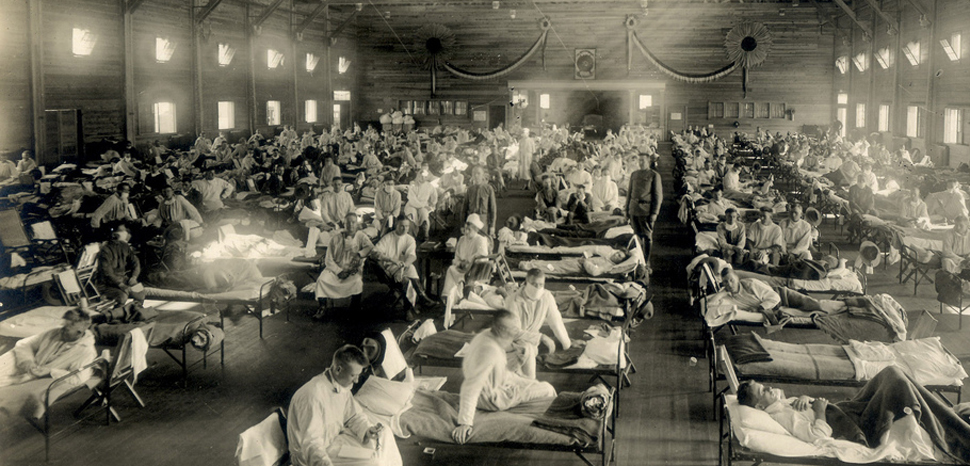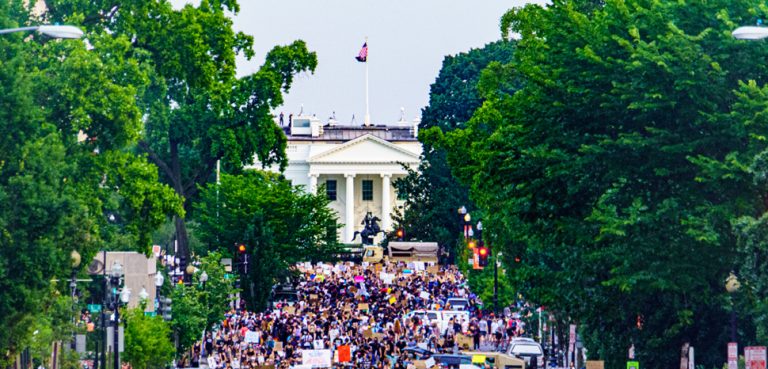The 1918 Spanish Influenza pandemic is incomparable to all modern diseases. With the exception of the AIDS/HIV crisis in the 1980s, no virus in the 20th century ravaged the world with such a fervor as the “Spanish Lady.” Her reign of terror, while remarkably swift, was nonetheless equally terrifying to all walks of life. Some, like José Ameal, now at over 100 years of age, still can’t forget what he saw as a child. Or what he felt.
“So many dead,” he told the BBC in 2018. He recalled how his aunt and uncle would keep the drapes drawn while the town marched it’s dead down to a collective burial ground, a useless attempt at shielding the young boy from the realities that faced his little village of Luarca, Spain.
Despite its name, it is believed the pandemic did not actually originate in Spain. Most modern experts agree that American soldiers brought it with them to Europe during World War 1, where it then spread quickly across the globe. Its name derives from the historical significance the country played in the crisis, even though natives referred to it as the “French Flu,” because of the influx of workers from France who introduced the virus to the peninsula.
One of the first recorded cases was Albert Gitchell, a US Army cook in Kansas, who was hospitalized with a 104-degree fever. The virus spread quickly through his Army installation, home to 54,000 troops. By the end of the month, over 1,000 had been hospitalized.
“The rapid movement of soldiers around the globe was a major spreader of the disease,” James Harris, a historian at Ohio State University, told History.com in a recent interview. “The entire military industrial complex of moving lots of men and material in crowded conditions was certainly a huge contributing factor in the ways the pandemic spread.”
Over the course of the pandemic, it crippled Mr. Ameal’s country, infecting an estimated 8 million people in all walks of life. Even King Alfonso XIII couldn’t escape its grasp. In Barcelona, the mayor was forced to bring out the garrison to help dig mass graves for the growing number of victims. Church bells across the countryside were banned from ringing, for fear of alarming the locals to the increasing fatalities. In the end, the disease claimed nearly 300,000 Spaniards in the course of a single year.
But Spanish Influenza’s final lesson remains unlearned by many people. The pandemic had two phases, divided by a singular mutation that altered the course of history. In the first months of the outbreak, it’s caliber was largely the same as the common flu. In the summer of 1918, it infected nearly 50% of the British troops fighting in Europe, and almost 60% of their French comrades. But the symptoms were relatively mild, and the survival rate was extremely high. Its symptoms included chills, a slight fever and cough. Typically, recovery occurred within a few days.
It’s the second wave, that starting in the fall of 1918, is famous for killing between 20-50 million people. In the month of October alone, nearly 200,000 Americans died. The symptoms of the mutation were far crueler, as victims usually perished within a few days. Their skin would turn a dark blue, caused by slow and painful suffocation as the lungs would fill with liquid.
The disease itself didn’t reach terminal levels until the mutation, which occurred in the months following the first outbreak. Health officials on both sides of the Atlantic refused to take the necessary precautions needed in the first few months of the disease, which almost certainly allowed the second strain to evolve. And while the profound lack of medical science at the time did play a role, much of the ignorance was willful. British government leader Arthur Newsholme, like many of his colleagues, fully understood that quarantine was the most effective way of preventing an international crisis, but as he concluded in his own writings, “the relentless needs of warfare justified incurring [the] risk of spreading infection,” going on to encourage Britons to simply “carry on” as normal.
It is true that governments did advise populations in urban areas to wear masks during the workday, but it’s undeniable that both the Allied powers and Germany turned a blind eye toward obvious health risks in order to continue the war. The results of such a collectively irresponsible decision was catastrophic.
Almost 3% of the world’s population died in 1918, with Influenza claiming more American servicemen’s lives than the fighting in Europe. It spread at an unbelievable rate, reaching as far north as remote Inuit communities in central Alaska. It’s believed that US President Woodrow Wilson even contracted it while negotiating at Versailles in 1919. The crisis didn’t subside to manageable levels until later that year, as by then it had either killed everyone it affected, or the survivors had developed immunity.
In late 2019, the world recoiled in fear as news broke that COVID-19, which had originated in Wuhan, China, was spreading throughout the globe. By January, the U.S. saw its first case: a relatively healthy man in his 30s who had recently come home to Washington State after traveling in Asia. In the last few months, international travel has been brought to a standstill, all of Italy is currently under a nation-wide quarantine, and US President Donald Trump has declared a national emergency in response to the pandemic.
The response in America, as in much of the world, has been issuing government restrictions on large gatherings. States like New York have mandatory containment zones, like the community in New Rochelle.
While many view the swift actions taken by state and local governments as too extreme or perhaps unnecessary, it is important to remember that while the coronavirus may not be particularly threatening to all age-groups at this juncture, that can change quickly if it isn’t stamped out. Even now, steps taken across the world to get ahead of the disease are paying off.
In China, after extreme, if not legally questionable measures were taken to prevent further spread of the Covid-19 virus, death rates began dropping. “Even the first and hardest-hit province, Hubei, saw its death rate tumble as public health measures were strengthened and clinicians got better at identifying and treating people with the disease,” Vox’s Julia Belluz wrote in a recent article on the subject.
The Spanish Influenza showed us the price of placing national interest, or personal preference, over health and safety. In the present crisis facing the international community, it is important that we do not make the same mistake. It is critical to follow guidelines set up by groups such as the World Health Organization, which include avoiding large crowds, staying home if you are sick, and washing your hands regularly.
All of us, both young and old, sick or healthy, share a responsibility to our society to do everything in our power to keep episodes like this at bay. And if history has taught us anything, it’s that neglecting our responsibility can lead to unimaginable carnage.
The views expressed in this article are those of the authors alone and do not necessarily reflect those of Geopoliticalmonitor.com or any institutions with which the authors are associated.




